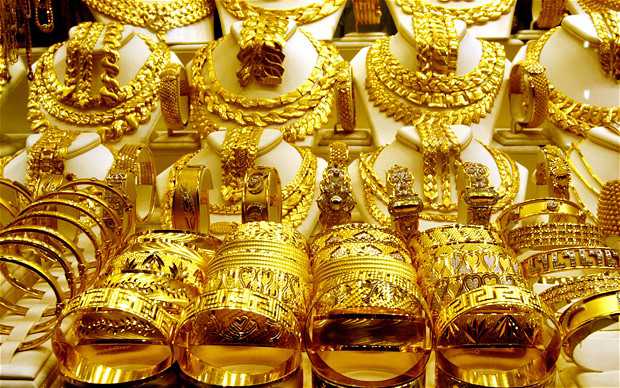
Demand for gold has risen steadily over the last decade Photo: REX
By Katherine Rushton
Around 2.5m ounces of the substance change hands in its labyrinthine alleyways each year, amounting to $29bn (£18.6bn) of business and giving the Grand Bazaar a clear lead as Turkey’s biggest gold market.
But that centuries-old ritual is starting to change. The economic downturn has fuelled trading of the ‘safe haven” metal to such an extent that Istanbul’s gold merchants have started to invest in expensive Bloomberg terminals in order to keep up with demand and step up the speed of transactions and gain access to the latest prices.
Each subscription costs $20,000 and is more commonly associated with a trading floor, but allows gold sellers to keep track of volatile prices, and instantly trade gold and currency with buyers far beyond the 4,000 shops of the Grand Bazaar.
“It’s a classic fusion of tradition and revolution,” said a Bloomberg spokesman.
“The Grand Bazaar is a uniquely dynamic and fast-moving trading environment that is highly price-sensitive.”
Demand for gold has risen steadily over the last decade, and continued its rally for most of last year as the eurozone crisis, economic stagnation in the West and the inflationary effects of quantitative easing drove demand for the metal.
It ended the year above $1,570 an ounce, well above its $1,420 price tag at the close of 2010, notwithstanding a sharp slump in early December.
Prices were around $300 a decade ago and despite 11 consecutive years of gains, many experts predict the metal will continue to rise this year.
Analysts at UBS, the Swiss bank, expect gold to hit $2,050 this year, although that view is seen as bullish by some, given the economic turmoil in Europe and contagion elsewhere.
BNP Paribas has forecast an average price for 2012 of $1,775 an ounce, rising to $2,150 in 2013.
via Grand Bazaar’s gold merchants turn to Bloomberg – Telegraph.

Leave a Reply